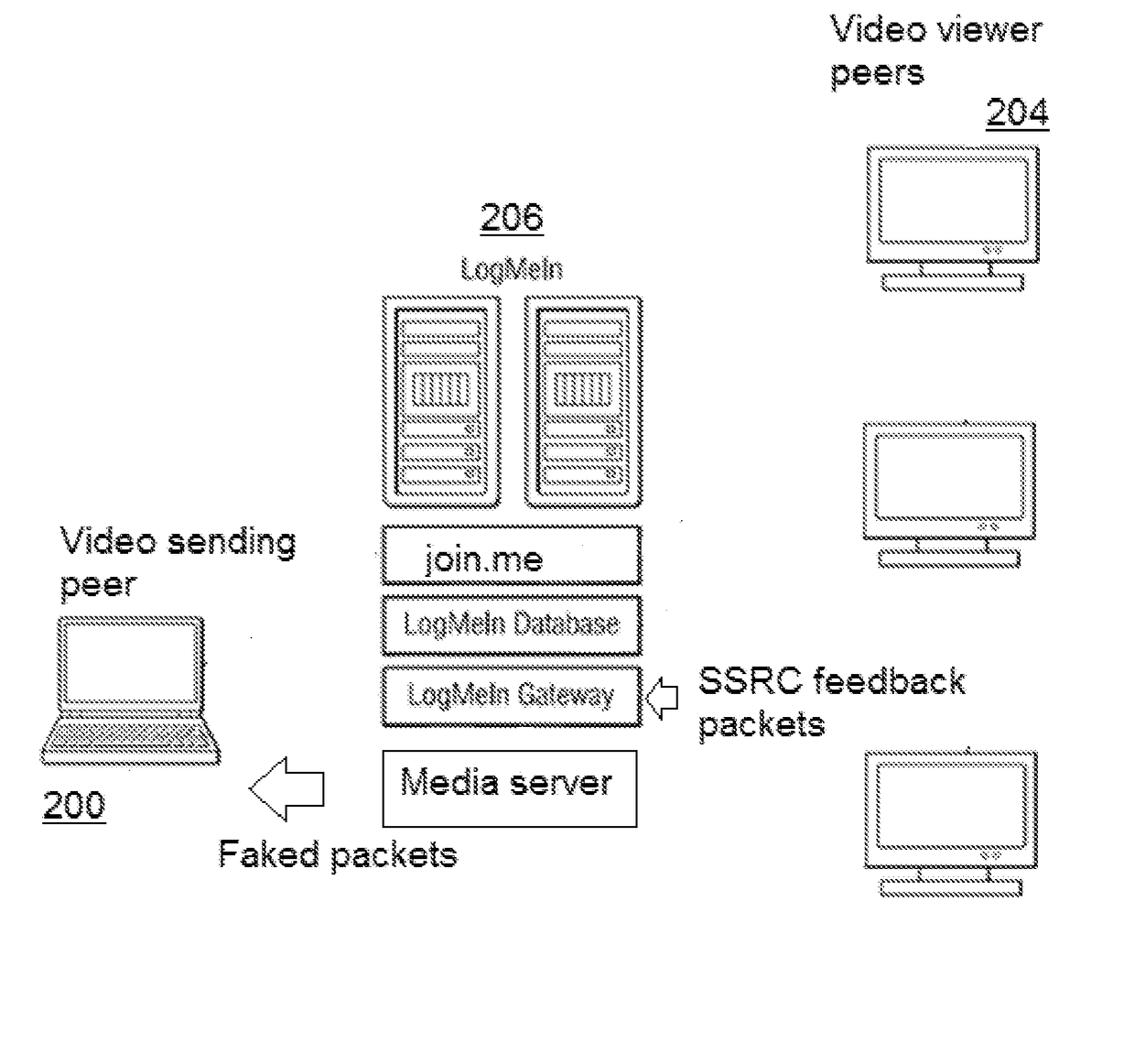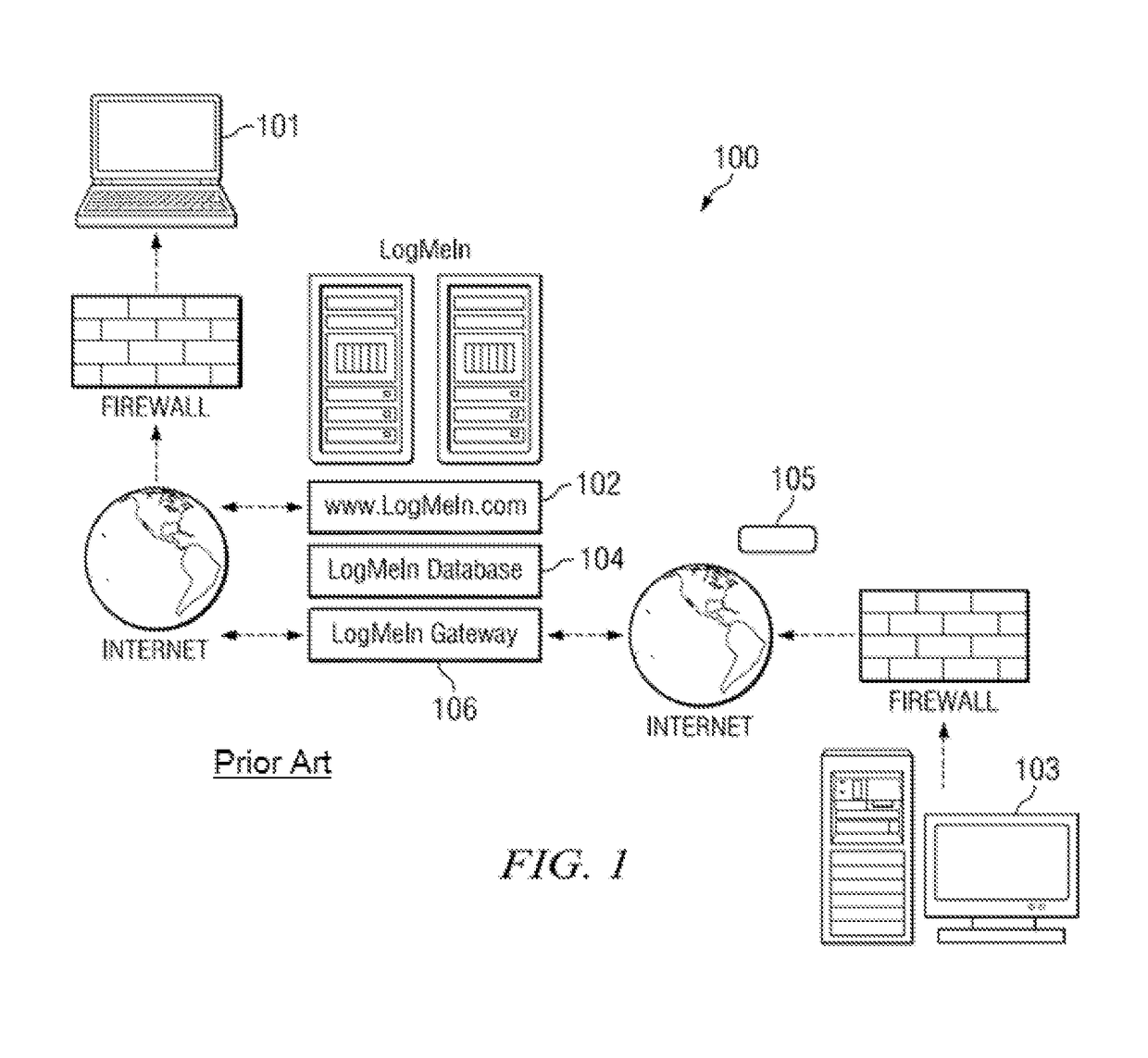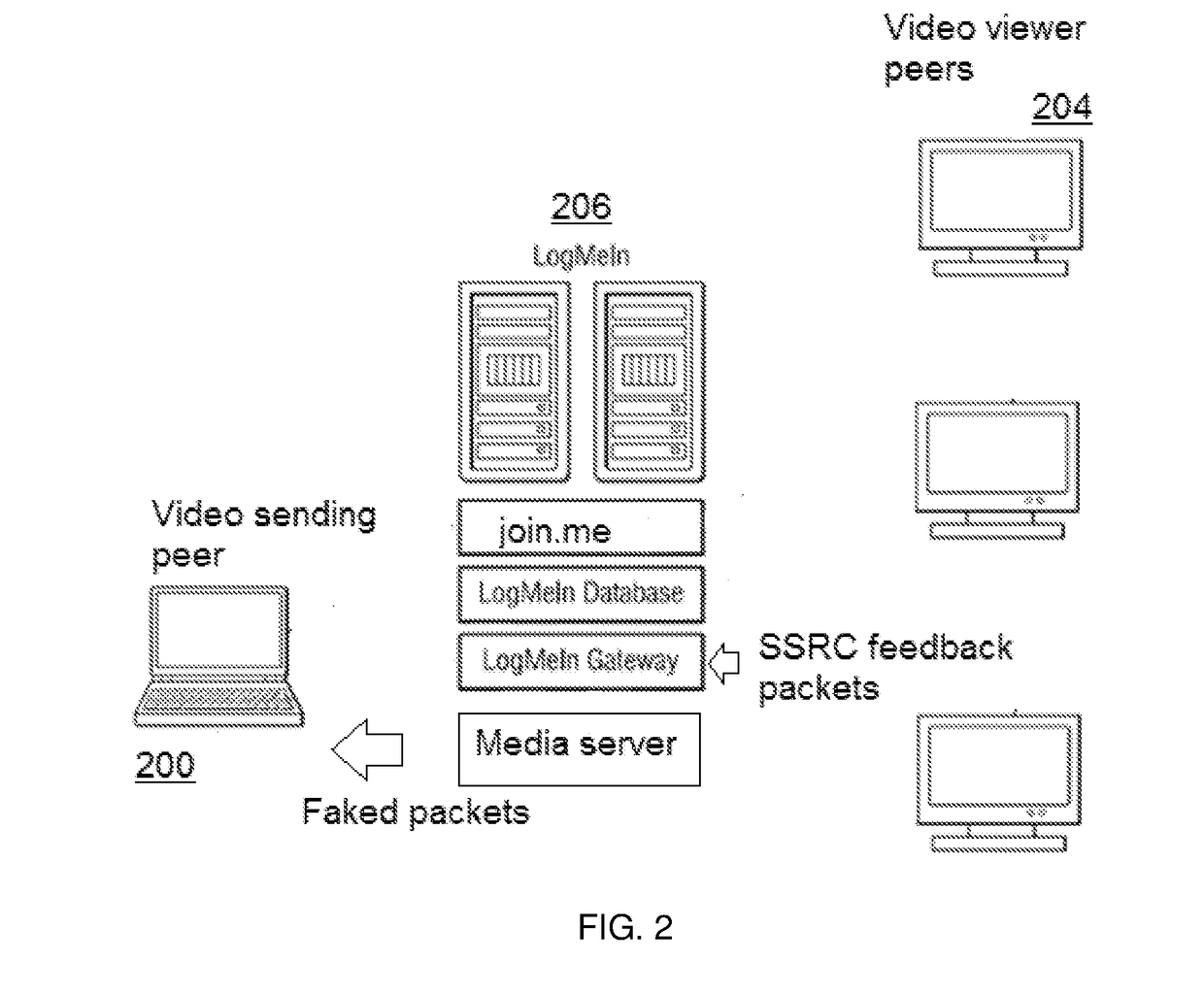Scalable real-time videoconferencing over WebRTC
a videoconferencing and webrtc technology, applied in the field of video conferencing technologies, can solve the problems of unstable media transfer among peers, significant limitations, and affecting the ability of collaboration, and achieve the effects of avoiding sharing ssrcs, reducing the number of required ssrcs, and maintaining the conference stable and operational
- Summary
- Abstract
- Description
- Claims
- Application Information
AI Technical Summary
Benefits of technology
Problems solved by technology
Method used
Image
Examples
Embodiment Construction
[0013]FIG. 1 illustrates a high level view of an on-demand architecture 100 in which the disclosed technique may be practiced. This architecture is merely representative, and it should not be taken as limiting. Preferably, the architecture comprises “n-tiers” that include a web server tier 102, a database tier 104, and a gateway tier 106. The web server tier 102 comprises a plurality of machines that each executes web server software. The web server tier provides an Internet-accessible web site. Preferably, the web site associated with a site domain (however designated) is available from multiple locations that collectively comprise the web server tier 102. The database tier 104 comprises a plurality of machines that each executes database server software. The database tier provides a network-accessible data storage service for generating and storing data associated with end user sessions to the remote access service. The gateway tier 106 comprises a plurality of machines that each ...
PUM
 Login to View More
Login to View More Abstract
Description
Claims
Application Information
 Login to View More
Login to View More - R&D
- Intellectual Property
- Life Sciences
- Materials
- Tech Scout
- Unparalleled Data Quality
- Higher Quality Content
- 60% Fewer Hallucinations
Browse by: Latest US Patents, China's latest patents, Technical Efficacy Thesaurus, Application Domain, Technology Topic, Popular Technical Reports.
© 2025 PatSnap. All rights reserved.Legal|Privacy policy|Modern Slavery Act Transparency Statement|Sitemap|About US| Contact US: help@patsnap.com



